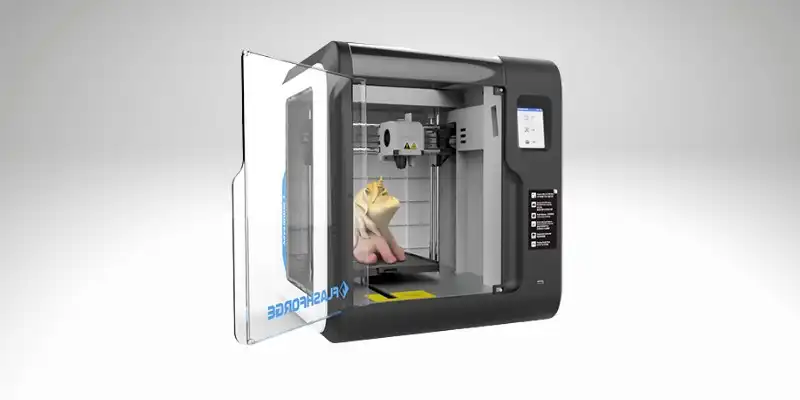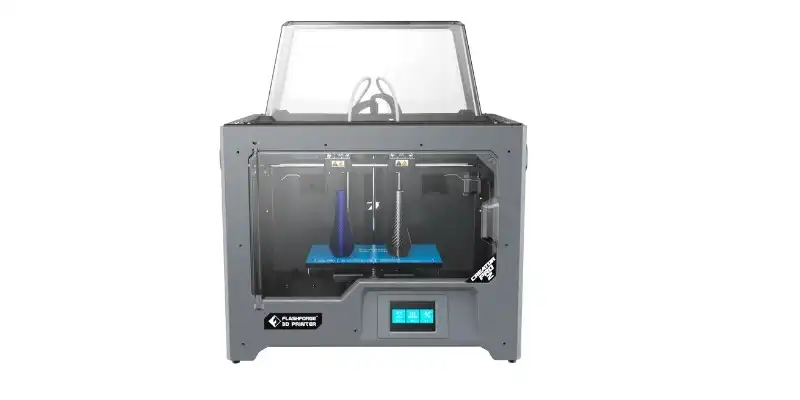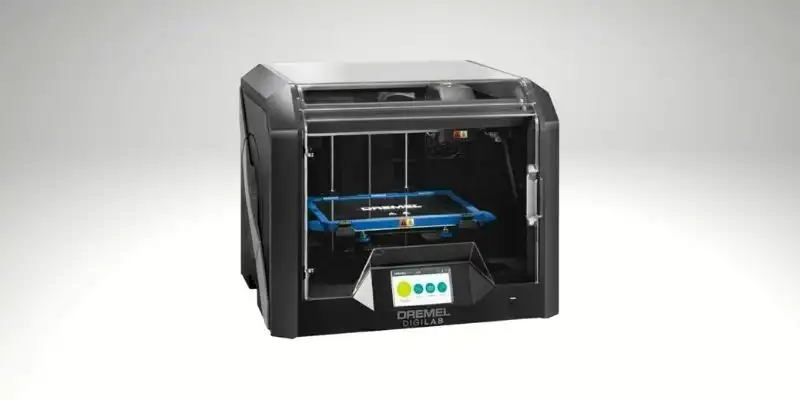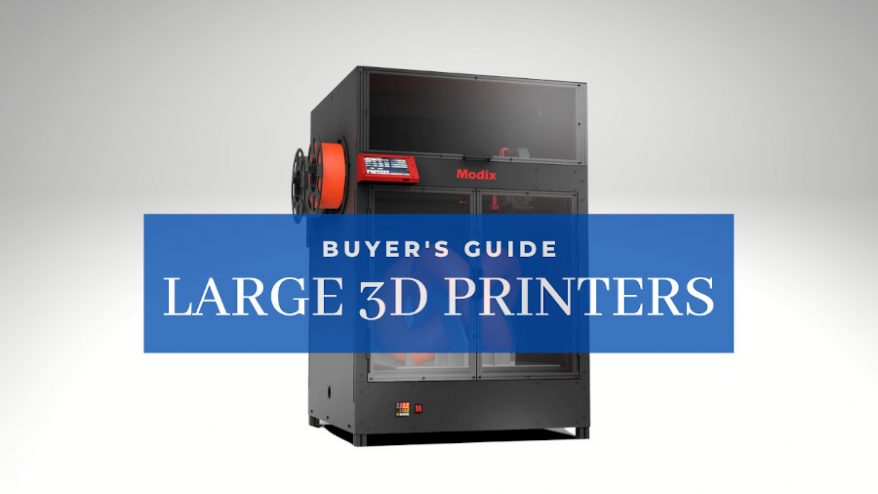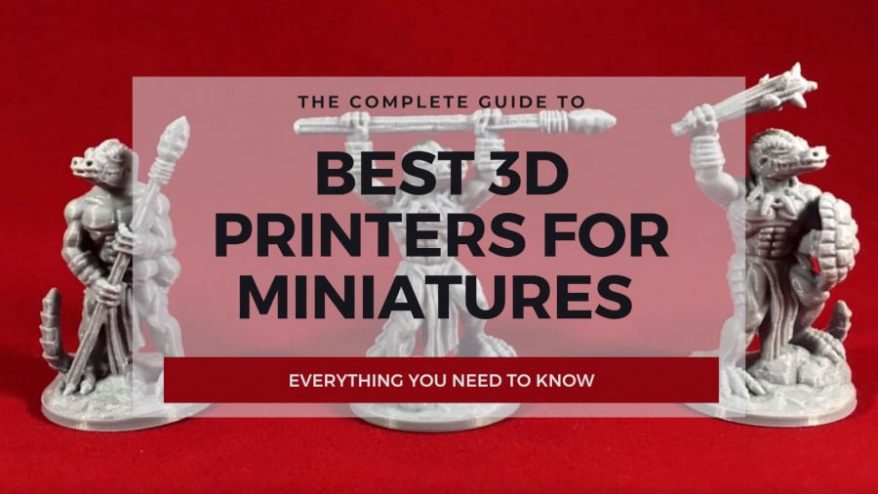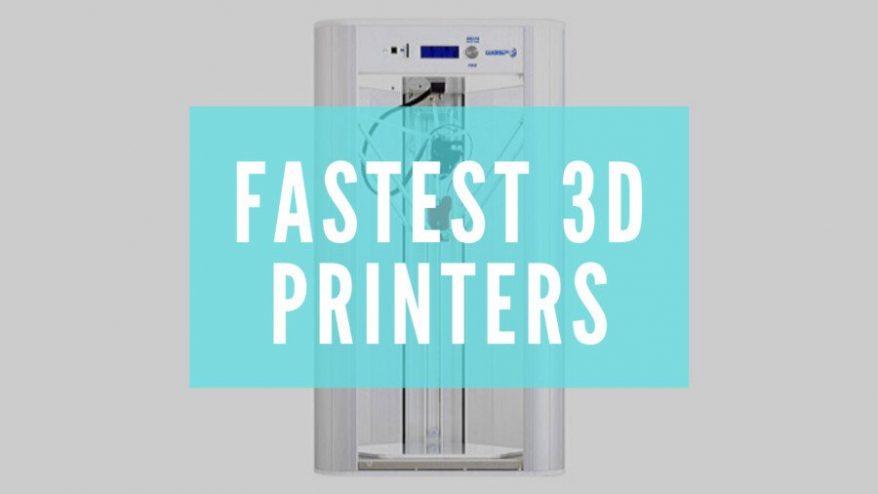Fancy dabbling in ABS 3D printing but aren’t sure where to start? We’ve pulled together a comprehensive guide showcasing the very best ABS 3D printers under the sun. You’ll find budget picks, professional-grade workhorses, and everything in between, with a guarantee that each one is money well spent.
|
|
|
|
|
4.3
|
4.5
|
4.7
|
|
|
$549-999
|
$1999
|
Best 3D Printers For ABS – Reviews
1. FlashForge Adventurer 3 – Top Pick For Beginners and Casual Makers
- Price: Check latest price at Flashforge here / Amazon here
- Build volume: 150 x 150 x 150 mm
- Max extruder temperature: 240°C
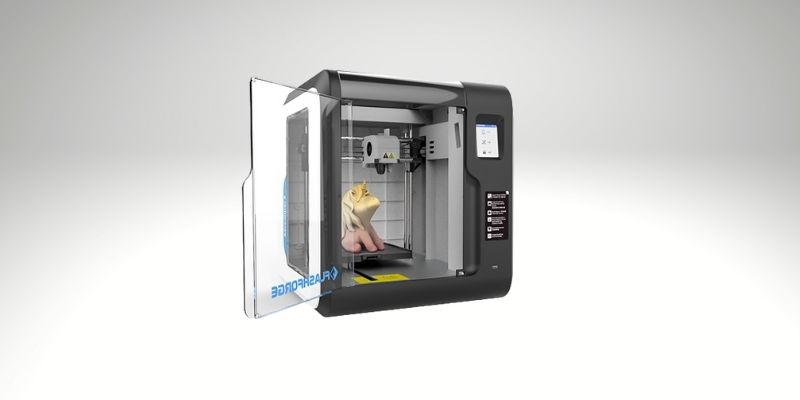
Pros
Great features for the price.
Affordable.
Beginner-friendly.
Cons
Small build volume.
Not much room for tinkering and upgrades.
The FlashForge Adventurer 3 taps liberally into the beginner-friendly playbook. This 3D printer for ABS abounds with features that take much of the initial sting out of 3D printing. As exemplified by a plain, uncomplicated touch screen and a removable flexible build platform, FlashForge Adventurer 3 removes many of the customary initial hurdles.
The simplicity extends to generally more hands-on aspects with assisted calibration, automatic filament loading, and an easy detachable nozzle assembly. And then, there’s pure convenience thanks to Wi-Fi connectivity and a serviceable built-in camera to monitor prints via the cloud.
With such a focus on ease-of-use, FlashForge could have side-stepped finicky ABS printing, but the FlashForge Adventurer 3 is well equipped to handle that capricious thermoplastic.
The printer features a fully enclosed chamber, which, when allied to an extruder capable of reaching 240°C in under a minute and a heated bed topping out at 100°C, you have everything required for ABS to flourish. While unremarkable, the print quality is consistent enough to generate perfectly adequate parts for decorative, or household use ends.
What the FlashForge Adventurer 3 isn’t is a machine for professionals or veteran printers. We could pinpoint the cramped 150 x 150 x 150 mm, the minimal slicer compatibility, or the filament chamber only accommodating FlashForge’s filament, but ultimately, this isn’t the target audience here.
If you’re a beginner or educator looking for a low-cost, ABS-capable printer that won’t bombard you with options or advanced features, the FlashForge Adventurer 3 is a compact, dependable machine.
2. Qidi Tech X-Plus 3
- Price: Check price on Amazon here
- Build volume: 280 x 280 x 270 mm
- Max extruder temperature: 350°C
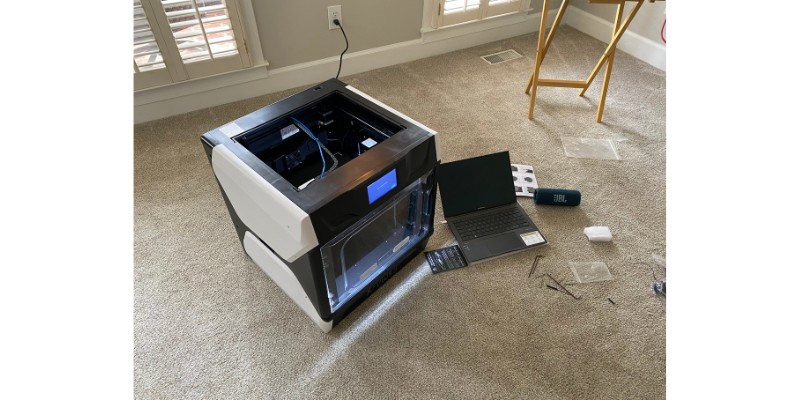
Pros
Equipped with the coreXY motion system for fast printing.
A generous build volume of 280 x 280 x 270 mm for large prints
High-quality build for long-lasting performance.
Cons
Higher price point compared to basic models.
Can be noisy at high speeds.
With an enclosure to prevent warping and a 350°C hotend, the Qidi Tech X-Plus 3 excels at printing temperamental ABS.
Its enclosure effectively combats warping, and the textured spring steel bed combined ensures that ABS first layers adhere perfectly.
Equipped with the coreXY motion system, the Qidi Tech X-Plus 3 can produce a 3DBenchy in just 17 minutes.
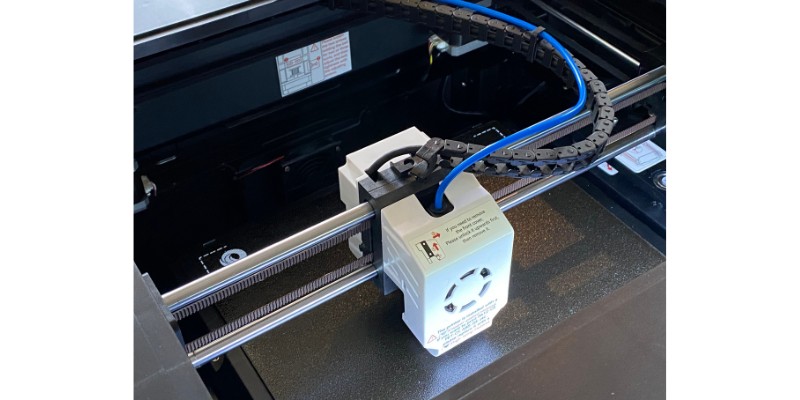
Its generous build volume and intuitive direct drive extruder ensure clean, detailed prints at high speeds, making it ideal for rapid ABS prototyping.
If you’re looking for accuracy and speed in ABS prototyping, this is the machine to beat. Check my full Qidi Tech X-Plus 3 review to learn more.
3. FlashForge Creator Pro 2
- Price: Available at Flashforge Official store here / Check price on Amazon here
- Build volume: 200 x 148 x 150 mm
- Max extruder temperature: 240°C
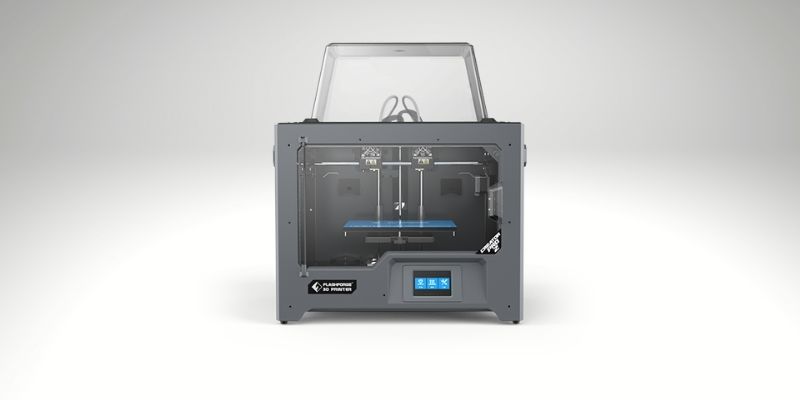
Pros
Independent dual extruder system suited to more complex material printing.
Lots of safety features are included.
Broad learning applications thanks to material compatibility.
Cons
Tied to FlashPrint slicer.
The FlashForge Creator Pro 2 ticks all the boxes for ABS printing. The printer has an enclosed chamber, a 240°C extruder, and a heated bed up to 120°C, but it stands out from the crowd thanks to an independent dual extruder setup.
The IDEX, as it’s called, allows the printing of different material types simultaneously. These can work with different colors/filament types for mirrored, duplicate, or multi-color prints. Alternatively, it can complete independent prints simultaneously. Doing so opens up many ABS printing possibilities, not least for more complex projects with overhangs that require soluble support structures such as rafts and brims.
Better yet, FlashForge keeps the asking price relatively low for what is usually a technology reserved for far more expensive ABS 3D printers. IDEX and inexpensive aren’t usually synonymous, but they are in the case of the FlashForge Creator Pro 2.
Though the FlashForge Creator Pro 2 arrives fully assembled and boasts user-friendly features like a touch screen, bed leveling is manual. When considered alongside the IDEX system, seasoned makers or small businesses with technical expertise will find this printer a better fit than a beginner looking for an easy first step into 3D printing with ABS.
Read more: the best dual extruder 3D printers
4. Creality CR-5 Pro
- Price: $1,199 — Available at Creality official store here
- Build volume: 300 x 224 x 380 mm
- Max extruder temperature: 300°C
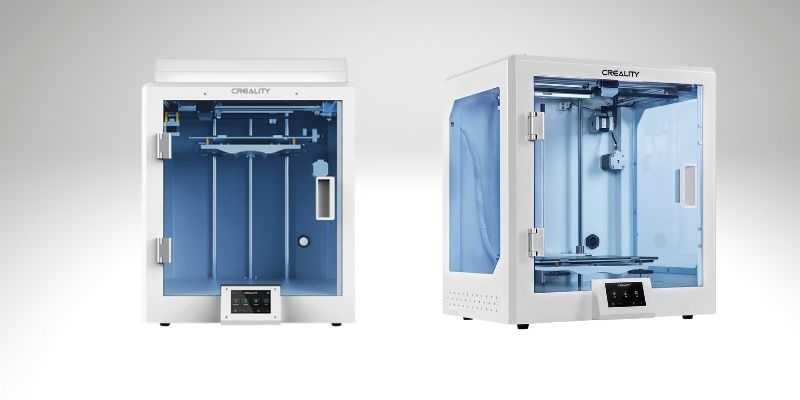
Pros
Striking appearance.
High-quality printing.
Good for hobbyists and small businesses.
Cons
Unsure if they want it to be an industry-grade printer or consumer-level device.
Striking in appearance with a distinct white shell and more than a passing resemblance to the stellar Ultimaker S5, the Creality CR-5 Pro asks you to dig deep into those coffers but justifies every penny.
A precision Bowden extruder melts ABS to an ideal 250°C while a 100°C heated bed ensures a warm landing pad. Additionally, the chamber is enclosed, trapping in all the heat ABS depends on. We’ve also written about the best enclosed 3D printers.
Standard stuff for an ABS-ready printer, you could say. But the Creality CR-5 Pro goes the extra mile. It has an Ultrabase-like carborundum glass plate, a roomy 300 x 225 x 380 mm build volume, and print quality with a level of smoothness and accuracy you won’t find on budget ABS 3D printers.
It isn’t easy to define the Creality CR-5 Pro as an industry-grade or a consumer-level printer as it seems to straddle both categories. But, therein lies the printer versatility. The Creality CR-5 Pro can serve hobbyists with the cash to spare just as well as a small business looking for a productivity-geared ABS printer.
5. Dremel 3D45 – Best ABS 3D Printer For Schools
- Price: $1,999 — Available on Matterhackers here / Available on Dynamism here
- Build volume: 254 x 152 x 170 mm
- Max extruder temperature: 280°C
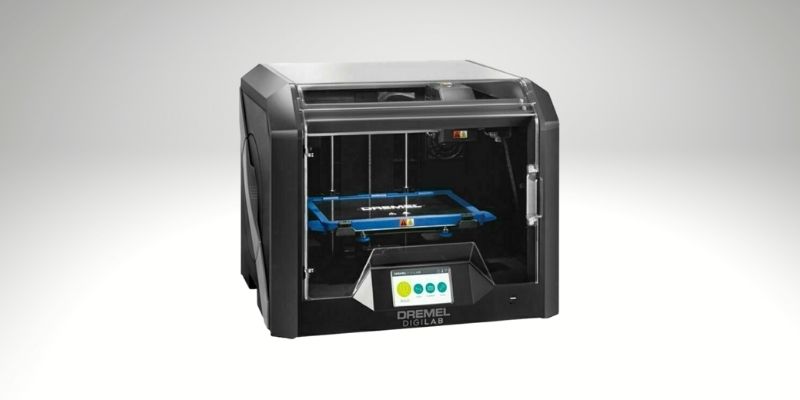
Pros
Minimal setup and easy-to-use features.
Ships with great learning resources.
Compatible with lots of material types.
Cons
The ecosystem theme might be too restrictive and tight to swallow for lone makers who favor options and possibilities.
The Dremel 3D45 is all about simplifying and streamlining ABS printing by bringing it under a user-friendly ecosystem that takes care of everything from the outset. For schools and educators that rank safety, ease of use, and performance on the same level of importance, the Dremel 3D45 is among the best options currently available.
The Dremel 3D45 spec sheet reads like a list of ideal ABS printing requirements: an enclosure, a 280°C all-metal extruder, and a 100°C heated bed. Using Dremel’s own ABS filament dials in optimum settings automatically and guarantees excellent prints every time. Safety and easy printing also pop up throughout the machine with carbon filters, see-through panels, a touch screen interface, and semi-automatic bed leveling.
The ecosystem theme here might be too restrictive and tight to swallow for lone makers who favor options and possibilities. There’s very little left to chance, which by extension stunts what the Dremel 3D45 can do beyond a narrow, hand-held, printing experience.
6. Ultimaker S3
- Price: $4,000 — Available at Dynamism here / Available at Matterhackers here
- Build volume: 230 x 190 x 200 mm
- Max extruder temperature: 280°C
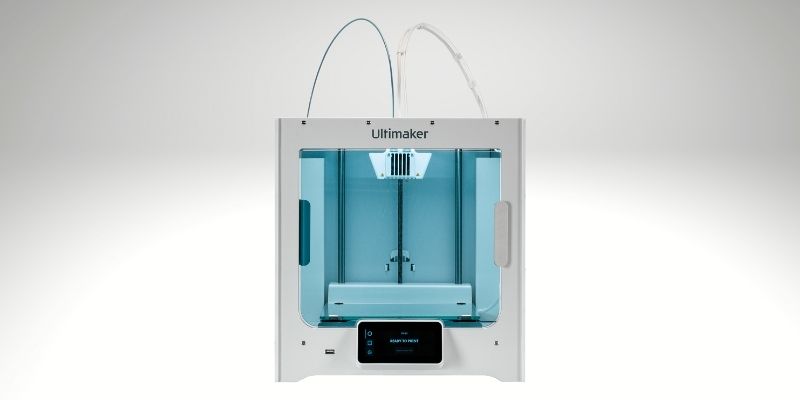
Pros
Fantastic precision with 20-micron minimum layer height.
Comes with IDEX dual extruder, printing two materials in one job.
Cons
Lack of speed for the price.
Last but not least, the Ultimaker S3 struts onto our list of the best ABS 3D printers. Deemed a more cost-friendly counterpart to the Dutch manufacturer’s $6000 Ultimaker S5, the Ultimaker S3 surges up the ranks as a versatile professional 3D printer suited to prototyping to batch-print manufacturing.
What makes the machine such a competent ABS printing pick is the combination of 280°C extruders, 140°C heated bed, and sleek enclosure design. The resulting print quality is among the best of any printer on our list, defined by excellent finish, distinct, precise edging, and fine detail. Should you want to work with other filament types, the Ultimaker S3 handles PLA to PVA, CPE, and nylon equally well, too.
The Ultimaker S3 also houses a dual extrusion system, meaning you can juggle two filament types or colors in a single print. The printer also ships with swappable print cores, each with properties suited to a particular filament type.
It’s worth touching on other features, too. For the price, you’ll land all the most coveted ease-of-use bits and bobs, including automatic bed leveling, Wi-Fi connectivity, a touchscreen interface, filament sensor, and more besides.
What Is ABS?
ABS filament, or acrylonitrile butadiene styrene, is, alongside PLA, it is one of the most popular filaments used in 3D printing. Makers favor ABS for its durability over PLA, which tends to be more brittle and less flexible. Due to its high melting point, ABS fares better in high-temperature environments and is prized among makers for its impact and chemical resistance.
This makes ABS a favorite in manufacturing, including injection molding, for applications as broad as plastic toys such as the ubiquitous Lego block to car dashboards by way of the plastic shell on countless home appliances.
ABS is notoriously difficult to tame and challenging to work with, though. The thermoplastic requires relatively high and stable temperatures to melt, unlike PLA, which becomes malleable at a comparatively lower temperature.
Other challenges surface as a consequence, notably ABS’ propensity for warping, a symptom of thermal contraction, something ABS is prone to due to its fast solidification properties. In other words, ABS shrinks when cooling. It’s vital to manage the speed at which the filament sheds temperature to avoid issues.
Buyer’s Guide – What To Consider When Buying An ABS 3D Printer
Enclosed Chamber
An enclosed chamber is a must-have and non-negotiable feature when shopping around for an ABS 3D printer. The reasoning behind this comes down to temperature control. ABS shrinks or contracts when it cools.
If ABS’ temperature drops too quickly, this can cause unwanted warping and curling. You’ll want to avoid this with an enclosure that ensures a steady temperature, allowing ABS to cool at a slower, more controlled rate, canceling out the likelihood of problems.
Extruder/Nozzle Temperature
ABS melts anywhere from 220°C to 230°C. Look for printers sporting an extruder and nozzle capable of temperatures from 220°C to 250°C as standard, if not higher, if you plan to work with more heat-sensitive materials such as nylon.
Heated Bed
Be sure to pick out a 3D printer with a heated bed and one ideally capable of temperature up to 120°C. However, 100°C works well enough with ABS. A heated bed ensures ABS is deposited on a suitably hot platform to avoid warping and other issues.
Budget
The best 3D printers for ABS printing are available at various price points. Features set them apart. You’ll find everything needed to print using ABS confidently on budget options. However, they will often lack quality-of-life features such as auto-bed leveling, Wi-Fi connectivity, and the like.
There’s also a direct correlation between price and the final quality of the prints. Pay more, and the results are generally of better overall quality.
If you’re starting 3D printing, we recommend opting for an inexpensive option to test the waters, with the option to level up to a pricier model as you become more confident.
Fans
While fans are great tools for less heat-sensitive materials like PLA, they can be detrimental to ABS printing. Introducing fans that remove heat from the chamber can complicate keeping the right thermal environment for ABS to shine. We recommend 3D printers with the option to turn fans off.
Key 3D Printer Features Needed to Print With ABS
While more demanding compared to relatively docile and predictable PLA, ABS can thrive in the right conditions.
1. Enclosed Chamber
First and foremost, a stable thermal environment. A 3D printer with an enclosed chamber provides such an environment, bottling heat inside the build area and blocking out warp-inducing cool air from souring the printing process.
2. High-Temp Nozzle
Alongside, due to ABS’ temperature sensitivity, it requires an extruder with a nozzle capable of reaching temperatures ranging from around 220°C to 250°C depending on specific filament manufacturer recommendations. Similarly, ABS fares best with a heated bed capable of maintaining a temperature around 100°C to 110°C.
3. Print Surface & Adhesive
Beyond specification-related requirements, you can take more granular steps to print with ABS successfully. Among them is working with a clean print surface, using an adhesive to help that all-important first layer latch onto the build plate, and switching off cooling fans if a printer has them.
4. Ventilation for ABS Toxic Fumes
Finally, working with ABS, you’ll invariably have to contend with wafts of pungent, foul-smelling, toxic fumes. Sufficient ventilation in the workspace helps dissipate these fumes, so be sure to crack open a window. Better yet, 3D printers housing air filters, ideally HEPA variants, help keep fumes in check, ridding them of their most harmful properties.
Consider These Upgrades: They’ll Help You Print Better With ABS
Most ABS plastic 3D printers ship with everything you need to get started, but there are always ways to improve the process and level up your printer. Here are three of the most common upgrade paths available to you.
All-Metal Hotend
One cost-effective upgrade that can prolong the longevity of your 3D printer is switching from a PTFE-lined hot end to an all-metal hot end or Capricorn tubing. PTFE lining is prone to wear and tear at temperatures approaching 250°C. Installing an all-metal variant is an excellent way to cut down on future maintenance.
Read more: the complete 3D printer nozzle buyer’s guide
BLTouch Sensor
Bed leveling is hands down the most frustrating part of 3D printing and is often the cause of countless printing issues and complications. If your printer doesn’t have automatic bed leveling or, at least, assisted bed leveling, then drafting in a BLTouch Sensor to help is a wise upgrade.
Read more: auto-leveling 3D printing
PEI Sheets
Not so much a hardware upgrade, as a handy tip, using PEI sheets can make all the difference when printing with ABS. PEI, or Polyetherimide, sheets remove the need for hair spray, glue, tape, and whatnot to ensure a firm and accurate first layer, all while being relatively inexpensive. Convenient because they are easy to install and require no preparation work, PEI sheets simplify the often hit-and-miss nature of 3D print adhesion.
What’s Changed?
We constantly update our recommendations based on our latest hands-on testing.
Jan 2024 updates:
- Updated pricing information for 2024.
- Removed the Creality CR-200B and Qidi Tech X-Plus. We replaced them with the new Qidi Tech X-Plus 3 that we recently tested hands-on in our workshop. It’s much faster, and a huge improvement on the previous X-Plus.

